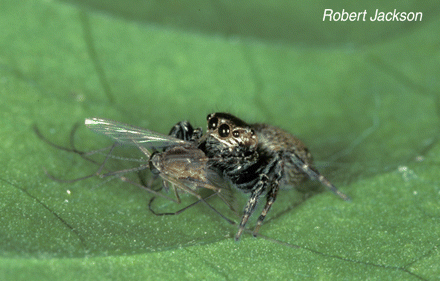Marc Abrahams's Blog, page 568
June 11, 2012
How gold wedding rings go missing abrasively
A gold wedding band symbolises permanence, but bits of it disappear as a marriage endures, scraping against the marital skin every moment that metal and finger convene. Georg Steinhauser, a chemist at Vienna University of Technology, calculated how much goes missing, how quickly and at what cost.
Steinhauser’s study, Quantification of the Abrasive Wear of a Gold Wedding Ring, appears in a 2008 issue of Gold Bulletin, a quarterly journal published by the World Gold Council, whose stated goal is “to stimulate desire for gold by articulating core truths and discovering new opportunities”.
Steinhauser got married. A week later he weighed his wedding ring. He weighed it every week over the next year. The report shows a graph of the weight, revealing an average loss of about .12mg a week….
So begins this week’s Improbable Research column in The Guardian.
BONUS: Freda Payne sings “Band of Gold:

Poll: Which number is the most important?
This month’s Scientific Correctness Survey will settle yet another science-related controversy simply, by asking the public to vote. Please vote:
Note: There is a poll embedded within this post, please visit the site to participate in this post's poll.

June 10, 2012
Failed Humor in Washington State.
 To begin, an example. Two friends in their 20s (called ‘L’ who is female, and ‘R’ who is male) are conversing :
To begin, an example. Two friends in their 20s (called ‘L’ who is female, and ‘R’ who is male) are conversing :
L: “What did the big cup say to the little cup?”
R: (sarcastically) “I’m bigger than you?”
L: “No, Nothing. Cups can’t talk”.
R: (completely ignoring L) “I can hold more water than you?”
As is evident, this is a poignant example of failed humor. And although humor in general has come in for great deal of consideration in academia – even having its own peer-reviewed journal since 1988, Humor, the International Journal of Humor Research), nevertheless a branch called ‘Failed humor’ has received far less attention. Unfittingly perhaps, considering its prevalence. Either way, Nancy Bell, who is an applied linguist and associate professor at the College of Liberal Arts, Department of English, Washington State University, US, has studied it in some considerable depth.
The (failed) joke example above comes from the professor’s chapter entitled ‘Impolite responses to failed humor’ (published in D. Chiaro and N. Norrick (eds.) Humor in Interaction (pp. 143-163). In the course of her research, the professor collected a corpus of 207 responses to failed humor – no less than 44% of which were coded as ‘impolite’. The chapter raises, and suggests answers to, the question : “Given that failing at humor is already humiliating, why might these interlocutors have opted to punish the tellers with aggravated face attacks?” Substantial extracts of the chapter can be found here:
The professor has also authored : Responses to failed humor, Journal of Pragmatics, Volume 41, Issue 9, pp. 1825–1836.
and : Failed humor: Issues in non-native speakers’ appreciation and understanding of humor. Intercultural Pragmatics, 7(3): pp. 423-447. (with Salvatore Attardo).
BONUS:
Three example jokes, for readers’ evaluation :
Mark as : Failed / Successful.
(It might help to try to ignore the applause, which may or may not be 100% meaningful in these instances).

The puzzle of rising diagnosis rates of certain nasty diseases
 Marya Zilberberg [pictured here] discusses the whats and wherefores of a modern medical puzzle-that-may-not-be-all-that-much-of-a-puzzle.
Marya Zilberberg [pictured here] discusses the whats and wherefores of a modern medical puzzle-that-may-not-be-all-that-much-of-a-puzzle.
Certain diseases seem to be occurring more commonly — yet the percentage of the population that die from those diseases remains pretty constant. Zilberberg writes in her Health Care, Etc. blog (referring to a recent BMJ article and to her new book, both of which explain the story in more detail):
How to game mortality data
There is a great illustration in this BMJ article of what I discuss in Chapter 2 of my book: the type of mortality that matters. In the figure below from the paper, note that, as the new diagnoses of each of the cancers rise (green lines), the attendant “Deaths” (red lines) stay unchanged….
(HT Ivan Oransky)

Penguins join the necrophilia club
 The Adélie penguin (Pygoscelis adeliae) has joined the club of bird species that are known to be engaged in necrophiliac behavior. In fact, in retrospect, the Adélie penguin is the first ever bird species in which necrophilia has been observed.
The Adélie penguin (Pygoscelis adeliae) has joined the club of bird species that are known to be engaged in necrophiliac behavior. In fact, in retrospect, the Adélie penguin is the first ever bird species in which necrophilia has been observed.
In a publication, titled ‘Dr. George Murray Levick (1876–1956): unpublished notes on the sexual habits of the Adélie penguin’ (Polar Record, FirstView Article : pp 1-7; doi:10.1017/S0032247412000216) the authors Douglas G.D. Russell, William J.L. Sladen and David G. Ainley report on an previously unpublished four-page pamphlet in which surgeon dr G.M. Levick described:
[his] observations of sexual behaviours in Adélie penguins at Cape Adare in 1911 and comments on frequency of sexual activity, autoerotic behaviour, and most notably, seemingly aberrant behaviour of young unpaired males and females including necrophilia, sexual coercion, sexual and physical abuse of chicks, non-procreative sex and homosexual behaviour.
A 100 years ago, these observations were too shocking for the public and therefore only printed in small numbers. One of the few remaining copies of the unpublished ‘The sexual habits of the Adélie penguin’ was recently unearthed from the reprint collection of the Natural History Museum, London. Now, Russel, Sladen and Ainley have honored George Murray Levick by publishing the pamphlet in its entirety. Chapeau!
I know what Levick must have felt. In 1995, it took me six years before I decided to publish my observation of (the first case of) homosexual necrophilia in the mallard duck.
BONUS: Here is the Guardian report about this find, and here the news brought by The Natural History Museum.

June 9, 2012
What is theoretical research? A perplexing read.
Read this passage from ”Two Lines of Sight and An Unexpected Connection: The Art of Helen Mayer Harrison and Newton Harrison“ by Arlene Raven (published in High Performance magazine, Winter 1987). Maybe you won’t find it confusing, maybe:
The work of Helen Mayer Harrison and Newton Harrison [pictured here] consists of deceptively simple solutions to complex ecological problems. Their process is embedded in layers of discourse, poetry, science, politics and passionate concern for human life. Here art historian Arlene Raven, a long-time contributing editor to High Performance, delves into the collective mind of the Harrisons, one layer at a time. —Eds. …
Our 1973 Sea Grant crabs laid out experimental grounds [for the development of a commercial aquaculture system for the crab]. Our method is available and can be used. We believe in theoretical research. Although our work points in theoretical directions we haven’t engaged in theoretical research,
But
the tank is part of an experiment
and the experiment is a metaphor for a lagoon
if the metaphor works
the experiment will succeed
and the crabs will flourish
after all
this metaphor is only a representation
based on observing a crab in a lagoon
and listening to stones.
(Thanks to investigator Ben Tobler for bringing this to our attention.)

June 8, 2012
An Early (1957!) Robotic Replication Sculptor Machine
For our readers who are wondering (or have at some stage wondered), when the first robotic sculptor mechanism was invented, Improbable cannot give a definitive answer, but can nevertheless point in the direction of this 1957 film about the UK based inventor George Macdonald Reid – who worked intensively (and single handedly) for an entire year at a lonely British farm in order to perfect his 3-D replicator device.
Click the image to play the film, which is presented courtesy of the Pathé film archive, and shows the lovely Danish actress Lillemore Knudsen undergoing the robotic replication process whilst being stabilised with a rubber sink-plunger. Here’s another still from the video:
Note: Mr. Macdonald Reid subsequently received a UK patent for his related invention : ‘Improvements in or relating to methods of producing three-dimensional articles that are similar to three-dimensional originals’

June 7, 2012
Saddle-sore: Unfortunate consequences of bicycling
Previous research has focused on whether male bicyclers with badly-positioned bike seats might be hurting their manhood. Turning to the other side of things, now researchers say riding a bike with the handlebars lower than the seat decreases sensation in women cyclists’ genitals. So their time in the saddle—the bike saddle, that is—may be diminishing their enjoyment during time “in the saddle.”
“The Bar Sinister: Does Handlebar Level Damage the Pelvic Floor in Female Cyclists?,” Sarah N. Partin, Kathleen A. Connell, Steven Schrader, Julie LaCombe, Brian Lowe, Anne Sweeney, Susan Reutman, Andrea Wang, Christine Toennis, Arnold Melman, Magdy Mikhail, & Marsha K. Guess, The Journal of Sexual Medicine, March 2012 (e-pub). The authors write:
Introduction. Cycling is associated with genital neuropathies and erectile dysfunction in males. Women riders also have decreased genital sensation; however, sparse information exists addressing the effects of modifiable risks on neurological injuries in females. [...]
Conclusion. Handlebars positioned lower than the saddle were significantly associated with increased perineum saddle pressures and decreased genital sensation in female cyclists. Modifying bicycle setup may help alleviate neuropathies in females.

There are a few reasons not to ride like this.
Note: the above image links to a discussion of biking saddle sores that is not for the faint of heart.
(HT Medical Daily)
Bonus: See one of Steven Schrader’s other articles, “Cutting Off the Nose to Save the Penis”
Bonus: See “brain pickings” blog’s List of Don’ts for Women on Bicycles Circa 1895

The vampire spiders and the transplanted mosquito heads
This tweet by May Berenbaum will lead you, if you let it, to an entomological adventure:
Testing vampire spider preferences by transplanting male mosquito heads on female mosquito bodies. It’s alive!! See J Exp Biol 6/7
Berenbaum refers, tersely, to this study:
“The discerning predator: decision rules underlying prey classification by a mosquito-eating jumping spider,” Ximena J. Nelson [University of Canterbury, New Zealand] and Robert R. Jackson [International Centre of Insect Physiology and Ecology (ICIPE), Mbita Point, Kenya], Journal of Experimental Biology, vol. 215, July 1, 2012, pp. 2255-2261.
BONUS: Kathryn Knight offers commentary about the study.

Cryptography Challenge: Boris Yeltsin
This month’s Cryptography Challenge is to: (1) analyze this short video, which presents a song ostensibly about “Boris Yeltsin”, the words to which consist entirely of repetitions of the words “Boris Yeltsin”; then (2) answer this question: Is there a coded message?
BONUS: If there is a coded message, decode it. If there’s not, don’t.
DOUBLE BONUS, from 2006: “Can YOU solve the mystery of The Duck Egg With 3 Living Minnows Inside It?” and “Gone Fishing” (via Jess Zimmerman)

Marc Abrahams's Blog
- Marc Abrahams's profile
- 14 followers



























